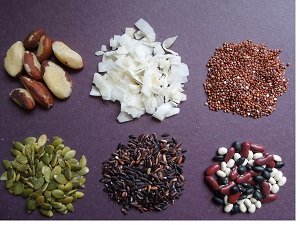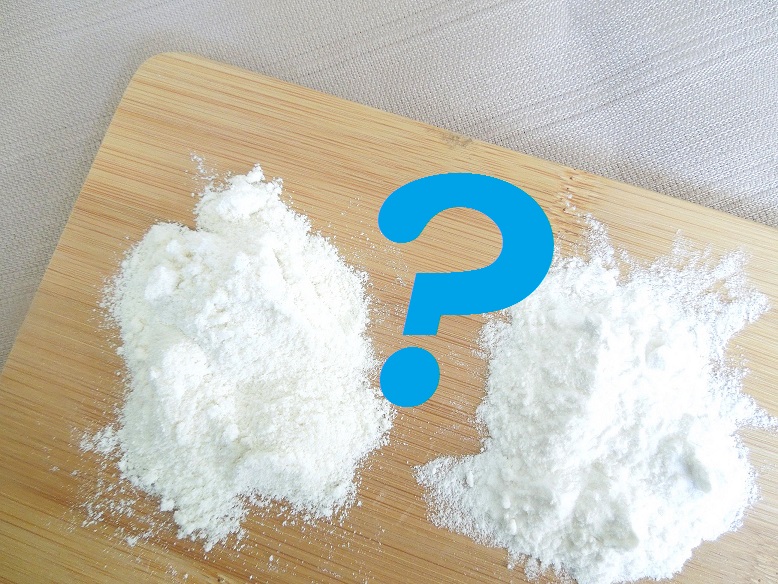Foods High In Magnesium
Foods high in magnesium are usually only the ones that are grown by farmers who check regularly for soil’s mineral composition, use mineral rich fertilizers and know how to rotate crops properly.
These are most likely to be organic farms, but still there is no guarantee that these wise farming practices are being implemented.
Factory-farmed food is almost certainly magnesium deficient because of the soil depletion, fertilizing with potash which blocks mineral absorption, watering with fluoridated water which binds magnesium and prevents it from being absorbed too, and finally refining which takes out 80-99% of any present magnesium.
Unfortunately, there is no requirement for minimum magnesium amounts in foods. There is no requirement to put it on labels either, so you will never find magnesium content on any labels, unlike calcium and iron, for example.
If you do see magnesium on a label, it is only because the manufacturer chose to put it there. These are usually manufacturers of organic foods high in magnesium.
Since there is no way to determine where and in what soil a particular batch was grown, the below table of foods high in magnesium should only serve as a general guideline in your food choices.
To save you time trying to figure out magnesium content in reasonable serving sizes I have decided to use most common serving sizes as a point of reference, simply because standardized tables (all foods per 3.5 oz. or per 1 cup) are not particularly helpful – one cannot possibly eat 1 cup of rice bran or 3.5 oz. of kelp a day, even though they are considered the highest in magnesium.
40 Foods High In Magnesium, mg per 1 serving
| Food | Serving size | Magnesium, mg | RDA |
| Rice bran, crude | 1/4 cup | 231 | 58% |
| Pumpkin seeds | 1/4 cup | 185 | 46% |
| Halibut, baked | 1/2 fillet or 6 oz. | 170 | 43% |
| Amaranth, cooked | 1 cup | 160 | 40% |
| Black rice, cooked | 1 cup | 131 | 33% |
| Quinoa, cooked | 1 cup | 118 | 30% |
| White beans, cooked | 1 cup | 113 | 28% |
| Sesame seeds | 1/4 cup | 111 | 28% |
| Almonds | 1/4 cup | 99 | 25% |
| Navy beans, cooked | 1 cup | 96 | 24% |
| Chia seeds | 2 tablespoons | 92 | 23% |
| Cashews | 1/4 cup | 89 | 22% |
| Wheat bran, crude | 1/4 cup | 89 | 22% |
| Buckwheat, cooked | 1 cup | 86 | 21% |
| Brown rice, cooked | 1 cup | 86 | 21% |
| Pinto beans, cooked | 1 cup | 86 | 21% |
| Mackerel, baked | 1 fillet or 3 oz. | 85 | 21% |
| Pine nuts | 1/4 cup | 85 | 21% |
| Pickpeas, cooked | 1 cup | 79 | 20% |
| Spinach, cooked | 1/2 cup | 79 | 20% |
| Peanuts | 1/4 cup | 77 | 19% |
| Swiss chard, cooked | 1/2 cup | 75 | 19% |
| Pecans | 1/4 cup | 74 | 19% |
| Lentils, cooked | 1 cup | 71 | 18% | Avocado, large | 1 fruit | 70 | 18% |
| Wheat germ, crude | 1/4 cup | 69 | 17% |
| Brazil nuts | 7 nuts | 64 | 16% |
| Oats, cooked | 1 cup | 63 | 16% |
| Coconut water* | 1 cup | 60 | 15% |
| Salmon, wild, baked | 1/2 fillet or 5 oz. | 57 | 14% |
| Figs, dried | 6 fruits | 56 | 14% |
| Cocoa powder | 2 tablespoons | 54 | 14% |
| Artichoke, medium | 1 fruit | 50 | 13% |
| Coconut meat, dried | 1/4 cup | 50 | 13% |
| Beet greens, cooked | 1/2 cup | 49 | 12% |
| Hazelnuts | 1/4 cup | 47 | 12% |
| Walnuts | 1/4 cup | 46 | 12% |
| Sunflower seeds | 1/4 cup | 43 | 11% |
| Kelp powder | 1 teaspoon | 36 | 9% |
| Molasses | 1 tablespoon | 32 | 8% |
* differs by brand, check the label.
Sources: the USDA National Nutrient Database, Linus Pauling Institute, “The Magnesium Miracle” by Dr. Carolyn Dean, “The New Encyclopedia of Vitamins, Minerals, Supplements and Herbs” by Nicola Reavley, www.nutritiondata.com and nutrient labels on foods in our kitchen.
Such foods as kelp, cocoa powder, molasses and sunflower seeds are always on top of all lists of foods high in magnesium. You can see now that they ended up at the bottom after the serving size adjustment.
In addition, keep in mind the following facts about dietary magnesium when trying to incorporate more of this important glutathione cofactor into your diet:
- Only about 50% of dietary magnesium gets absorbed, the rest is eliminated in stool and urine. More gets absorbed if you are deficient, less – if you are on a high-magnesium diet. Experts agree that there is no risk of overdose as any excess will simply be eliminated.
- The level of absorption is influenced by the health of the small intestine where magnesium is absorbed into the bloodstream.
- Absorption is hindered by too much calcium, that’s why the ratio of calcium to magnesium should ideally be 1:1, and never more than 2:1. In cases of severe magnesium deficiencies – even 1:2 in favor of magnesium for the initial period of therapy.
- Too much phosphorus, potassium and sodium may hinder magnesium absorption.
- High doses of zinc decrease magnesium absorption.
- Supplemental iron decreases magnesium absorption and vice versa.
- Vitamin D is necessary for the body to use magnesium, but excess supplemental vitamin D (over 2,000 IU a day) may lead to magnesium deficiency as vitamin D readily grabs magnesium for its own use.
- Vitamin B1 (glutathione cofactor) is necessary for magnesium to enter cells.
- Vitamin B6 (glutathione cofactor) increases the amount of magnesium that can enter cells.
- Selenium (glutathione cofactor) helps magnesium stay inside cells.
- There should be enough water intake throughout the day because magnesium is water soluble.
- Phosphates from sodas and processed meats bind with magnesium and make it insoluble.
- Fluoride binds with magnesium as well and prevents absorption.
- Certain compounds from foods (tannins in black and green tea and coffee, oxalic acid in raw spinach, Swiss chard, beets and beet greens) hinder magnesium absorption. Drinking teas and coffee that are not too strong and only between the meals, and also cooking or steaming the greens and vegetables, should solve this problem.
- People with kidney diseases, obstructed bowel and certain heart conditions should not take large doses of supplemental magnesium.
- Always consult a physician or a nutritionist before adding more foods high in magnesium into your diet or taking any supplements, especially if you have a health condition.
If you are considering a magnesium supplement, for additional help visit our page Types of Magnesium Supplements.
Return to Top of Foods High In Magnesium
Return to Benefits of Magnesium
Return to List of Superfoods
Return to Home





